-
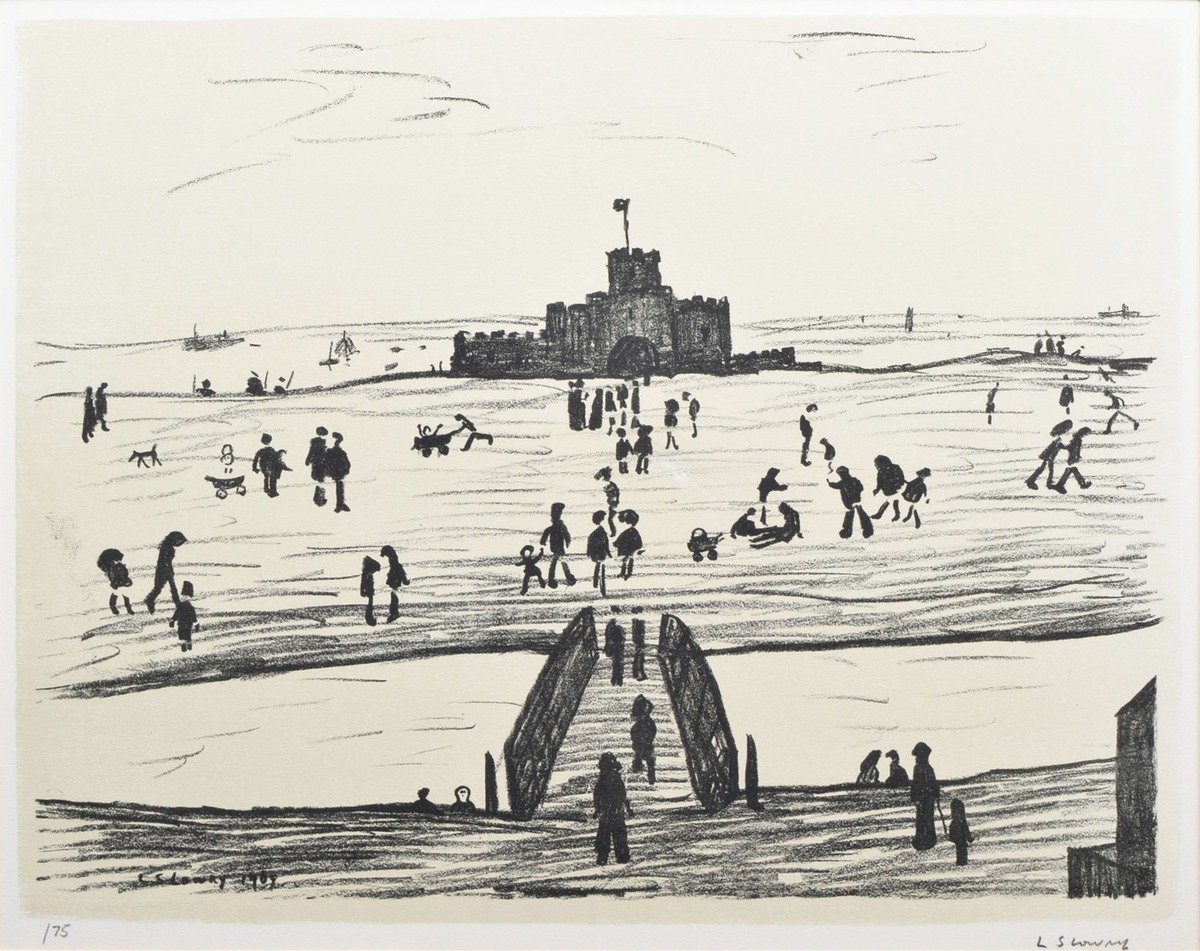 Add to basket
Add to basketCastle on The Sands
Signed by L.S. Lowry
Price on Request
-
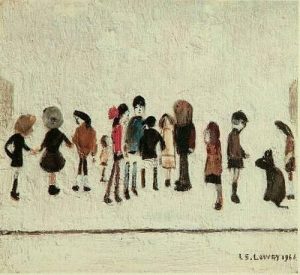 Add to basket
Add to basketGroup of Children
Signed by L.S. Lowry
£4,750
-
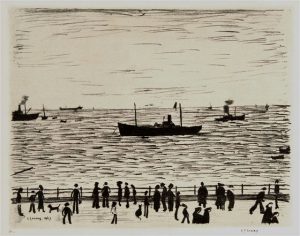 Add to basket
Add to basketSeaside Promenade
Signed by L.S. Lowry
Price on Request
-
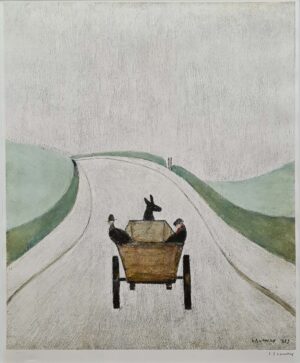 Add to basket
Add to basketThe Cart
Signed by L.S. Lowry
Price on Request
-
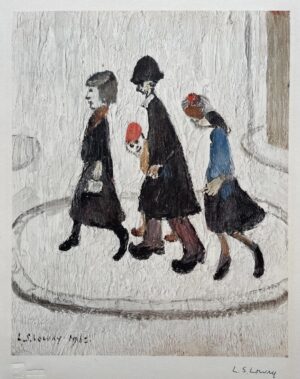 Add to basket
Add to basketThe Family
Signed by L.S. Lowry
Price on Request
-
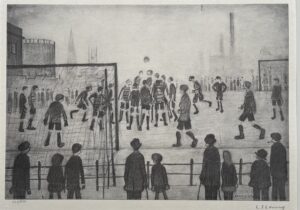 Add to basket
Add to basketThe Football Match
Signed by L.S. Lowry
Price on Request
-
 Read more
Read moreA Hillside
Signed by L.S. Lowry
ARCHIVED
-
 Read more
Read moreA Northern Town
Signed by L.S. Lowry
ARCHIVED
-
 Read more
Read moreA street full of people
Signed by L.S. Lowry
ARCHIVED
-
 Read more
Read moreAn Industrial Town
by L.S. Lowry
ARCHIVED
-
 Read more
Read moreBerwick-Upon-Tweed
by L.S. Lowry
ARCHIVED
-
 Read more
Read moreBloomsbury Square
by L.S. Lowry
ARCHIVED
-
 Read more
Read moreBritain at Play
by L.S. Lowry
ARCHIVED
-
 Read more
Read moreBurford Church
by L.S. Lowry
ARCHIVED
-
 Read more
Read moreCounty Court, Salford
by L.S. Lowry
ARCHIVED
-
 Read more
Read moreCrime Lake
by L.S. Lowry
ARCHIVED
Biography for L.S. Lowry
1887-1976
L.S. Lowry is an international master and unquestionably one of Britain’s most celebrated artists. His unique contribution to recording the period, culture and landscape of the industrial North is without parallel. Lowry’s paintings and drawings offer a most distinctive and comprehensive record of early 20th Century northern industrial towns. Many people associate Lowry with “Matchstick Men” which became virtually his trademark, perpetuated by the 1977 hit song ‘Matchstick Men and Matchstick Cats and Dogs’ by Michael Colman & Brian Burke, but he also produced a large number of unpopulated landscapes and seascapes which are now recognised as masterpieces in their own right. Later in his life Lowry concentrated on producing paintings of figures either singly or in groups, invariably against a white background.
Laurence Stephen Lowry was born on the 1st November 1887 in the respectable district of Victoria Park, Manchester. An only child to an estate agent Father and piano teacher Mother, Lowry showed no academic aptitude at school, so was enrolled in private art classes. By 1905 he was under the tutelage of the French Impressionist artist Pierre Adolphe Valette. And in 1915 ‘graduated’ to the Salford School of Art, where he continued to study at evening classes until 1928. An extraordinary fact being (and one he liked to keep private) was that Lowry was only a part time artist, having a job as a rent collector until 1952.
In 1909 Lowry’s father’s business failed and the family had to move to a smaller house in the less salubrious area of Pendlebury, an industrial suburb to the northwest of Salford. However, Lowry was now able to observe the real working class at close quarters; in both his own surroundings and when out rent collecting. These scruffy characters, in their second hand clothes, trousers too large; too small, simply covering legs, hats hiding heads; the hat ‘speaking’ for the face, the bodies wrapped up in coats and mufflers not for fashion but for practical warm, the body language; they way they walk, stand, run, loll, droop, drift, hobble, skip and stroll, telling the story of their lives. All these ‘Chaplinesque’ humorously portrayed figures quickly filled up Lowry’s sketch books. Local exhibitions of Lowry’s works followed, but it wasn’t until his mother’s death in 1939 that Lowry found real fame as an artist.
In 1938, Alexander J McNeill Reid, a director of the Lefevre Gallery in London, saw several of Lowry’s paintings awaiting framing at James Bourlet & Sons Limited. He inquired after the artist and in 1939 a one-man exhibition of Lowry’s paintings was held at the Lefevre Gallery. That exhibition sold sixteen paintings including one to the Tate Gallery. The Lefevre Gallery showed 15 solo exhibitions of his work between 1945 and 1979.
After nursing his neurotic mother till the end, Lowry was deeply regretful that she was never to witness his recognition as an artist. Slipping into depression, Lowry was unable to maintain the upkeep of the house he had lived in for nearly 30 years and eventually it was repossessed. However, not short of funds he bought a new house and employed a housekeeper. Although he considered ‘The Elms’ in Hyde, Cheshire ugly and uncomfortable he stayed there until his death some 30 years later.
“Can you tell me, sir, why does a painting cost more than a drawing? After all, a drawing is every bit as important, and sometimes a damned sight more effective. Besides, it is more difficult to do; for one thing, you haven’t got colour to get you out of a mess.” These remarks of L.S. Lowry are central to an understanding of his drawings and lithographs. He did not see these mediums as taking second place to his paintings. Lowry’s drawing and lithographs express a purity of engineering drawings, lacking all pretension. Lowry’s relentless drawing; be it on scraps of paper, envelops, serviettes or bits of card always demonstrated the brisk, stabbing style that could rip the soul out of the subject. As evident in Lowry’s striking piece ‘Woman with Beard’. This signed print is signed bottom right L.S. Lowry. Mervyn Levy writes in his book ‘The Drawings of L.S. Lowry’: “Lowry’s feeling for the art of drawing can be likened to the late Italian masters such as Michelangelo and Leonardo. It is, after all, pure Renaissance thinking to see in drawing an art form as total and significant as painting.”
Lowry was a brilliant master of the smudging technique which he developed at Manchester College of art and continued to apply extensively through all phases and periods of his work. With this finger-and-thumb application he was able to create ‘atmosphere’, whether it be the physical atmosphere of the industrial scene; as exhibited in Lowry’s signed lithograph prints: ‘A Northern Town’, a 1966 print, edition of 75 and signed bottom right L.S. Lowry. ‘Francis Terrace, Salford’, a 1966 print, edition of 75 and signed bottom right L.S. Lowry. ‘A Street full of People’, a 1966 print, edition size 75 and signed bottom right L.S. Lowry. ‘The Viaduct Salford’, a 1966 print, edition size 75 and signed bottom right L.S. Lowry. And signed prints: ‘County Court, Salford’, signed bottom right L.S. Lowry and ‘Great Ancoats Street’, signed bottom right L.S. Lowry. Or be it through psychological tension in which his people are often locked; as illustrated in the signed lithograph print: ‘Bloomsbury Square’, a 1966 print, edition size 75 and signed bottom right L.S. Lowry. Signed print: ‘Crime Lake’, signed bottom right L.S. Lowry. And in ‘Shapes and Sizes’ a 1966 lithograph print, edition size 75, signed bottom right L.S Lowry. Or the atmosphere of mystery which pervades in the hazy and misty landscape scene; as depicted in the 1966 signed lithograph print: ‘Seaside Promenade’, edition size 75 and signed bottom right L.S. Lowry. The 1969 signed Lithograph print: ‘A Hillside’, edition size 75, signed bottom right L.S. Lowry. The 1966 signed Lithograph print: ‘Castles on the Sands’, edition size 75 and signed bottom right L.S. Lowry. And in the 1966 signed Lithograph print: ‘Village on a Hill’, edition size 75 and signed bottom right L.S. Lowry. As Mervyn Levy goes onto say in his book ‘The Drawings of L.S. Lowry’: ‘Everywhere in Lowry’s work there is evidence that black was used both as tone and as a synonym for colour. In his hands black – solid, or broken into silvery greys – suggests the colour of objects, materials, clothes; the pallor or robustness of complexions; the weathered, grime-encrusted character of stone; the fleeting haze of smoke; or even, magically, space itself; exquisitely executed in the signed print: ‘The Notice Board’, signed bottom right L.S. Lowry. Lowry’s ‘smudge’ technique; creating form, colour and texture shines through in the 1966 signed Lithograph print: ‘Sunday Afternoon’, edition size 75, signed bottom right L.S. Lowry. The 1966 signed Lithograph print: ‘The Pavilion’, edition size 75, signed bottom right L.S. Lowry. And so too in the 1966 signed Lithograph print: ‘Winter in Broughton’, edition size 75 and signed bottom right L.S Lowry and signed print: ‘Peel Park’. As Lowry said ‘your thumb is one of the best tools you’ve got you know, you can do a lot more with it than you can with a brush!’
Lowry scarcely used middle or half tones and as the years progressed his works depicted his figures more frequently as silhouettes; as seen in the signed prints: ‘Ferry Boats’ and ‘The Football Match’. Lowry’s ‘matchstick men and matchstick cats and dogs’ are vividly demonstrated in the excellent 1966 signed Lithograph print: ‘Three Cats, Alstow’, edition size 75 and signed bottom right L.S. Lowry.
Another quote from Mervyn Levy from his book ‘The Drawings of L.S. Lowry’: ‘His drawings in particular seem to crystallize with their crisp lines and broad areas of light and shade the very essence of life, offering a sense of continuous movement and change’ These words too, could best describe the 1966 signed Lithograph print: ‘Old Steps Stockport’, edition of 75 and signed bottom right L.S. Lowry. And the signed print: ‘Burford Church’ signed bottom right L.S. Lowry.
The constant theme in Lowry’s work is the insignificance of man in his settings, which is often magnitude by placing him against a backdrop of majestic buildings which dwarf his absurd smallness; as demonstrated in the signed prints: ‘Mill Scene’, ‘St Simons Church’, ‘Our Town’ and the signed print: ‘The Reference Library’, all signed bottom right L.S. Lowry. The scuffling of his people, their stopping and starting, are always brilliantly crystallized in Lowry’s works – the momentary illusion of a position in space and time, before they disappear leaving only the building standing erect and proud; he executes with brilliance in his paintings and signed prints: ‘Street Scene’, ‘Level Crossing, Burton On Trent’, ‘Meeting Point’, ‘Station Approach’, ‘Mrs Swindell’s Picture’ and ‘Industrial Scene’, all these prints are signed bottom right L.S. Lowry.
Lowry was a deeply reflective man, and although he viewed the human situation with great humour, he always leaned towards black comedy, both in his work and with his friends. Children in his lithographs and paintings often bore the brunt of this, with scenes of them dragging impossible dogs through the streets or pushing tiny prams often overflowing with a brother or a sister. The 1969 signed lithograph print: ‘A Hillside’ and the 1966 signed Lithograph print: ‘tree in a Square’ (both editions of 75) are fine examples of showing such shenanigans, so too the signed prints: ‘Market Scene in a Northern Town’ and ‘Level Crossing, Burton on Trent’, all these prints are signed bottom right L.S Lowry.
Lowry himself would often appear in his pictures. He is the tall, gangly hatted figure, either standing still observing; as in the 1966 signed Lithograph prints: ‘Sunday Afternoon’ and ‘Castle on the Sands’ and in the signed print: ‘The Football match’, or wandering through the scene; as in the signed prints: ‘View of a Town’ and ‘Level Crossing with Train’. All these prints are signed bottom right L.S. Lowry.
Mervyn Levy in his book ‘The Drawings of L.S. Lowry’ describes Lowry as a “pictorial novelist … a novelist-painter”. Lowry has a lot to say about man, as an individual; as acknowledged in the signed print: ‘Man on a Wall’. In his relationship to his fellow man; as demonstrated in the signed prints: ‘Group of Children’ and ‘Man Holding Child’. And to man’s connection to his environment; as beautifully illustrated in such prints as: ‘Mill Scene’ and ‘Our Town’. All these prints are signed bottom right L.S. Lowry. In these works Lowry gives us a vivid image of the extent to which environment ‘shapes’ man’s appearance and character. Lowry’s people are bowed and twisted by the rigours of mill life. Poverty creating its own kind deformity. Nearly all of Lowry’s works are firmly rooted in the lean years of the depression, somewhere between 1925-1935. When asked why nearly all his settings are base in this period. ‘Because’ he replied ‘I was happiest then, and because I like the look of ill-fitting clothes, big bowlers, and clumsy bodies. They are comical.’ As vividly shown in the signed prints: ‘The contraption’ and ‘Two Brothers’, both signed bottom right L.S. Lowry.
In his later works Lowry does away with the landscape, citing to friends that he had no interest in the changing of his surroundings, preferring instead to focus upon groups of figures and old imaginary characters; as starkly appears in the signed prints: ‘His Family’, ‘The Cart’, ‘The Family’, ‘People Standing About’ and ‘Three Men and Cat’. All these prints are signed bottom right L.S. Lowry.
Lowry was bestowed with many awards throughout his life for his artistic endeavours, and although he was appointed official Royal artist at the Queen’s Coronation in 1955, became a Royal Academician in 1962, had his painting ‘the Pond’ used as the Prime ministers official Christmas card in the winter of ’64 andhis stamp ‘Coming out of school’ was the highest value stamp in a series depicting great British artists in 1967; Lowry declined a knighthood in 1968 and the Order of the Companions of Honour in 1972 and again in 1976 (Lowry appears to hold the record for the most honours declined).